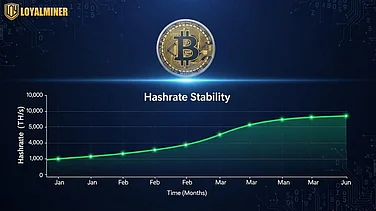In the world of cryptocurrencies, stablecoins are distinct in that they are designed to reduce the hypervolatility that defines the majority of digital currencies. While some stablecoins utilize fiat reserves or collateral investments such as gold and other cryptocurrencies, a more experimental offshoot known as algorithmic stablecoins attempts to simulate stability without explicit backing. Rather, they maintain value via exactly calibrated supply reallocations, an operation based in economic theory and decentralized governance via blockchain. The understanding of how such an operation works is critical to comprehending the greater mechanism of stablecoin operation.
The Idea Behind Algorithmic Stablecoins
The design rule of algorithmic stablecoins is simple to understand: if the price of an algorithmic stablecoin diverges significantly from the target value, the system automatically adjusts the supply in circulation to make it converge again. The target is most commonly set relative to the U.S. dollar, but the technique can be applied relative to other standards as well. Unlike reserve-backed arrangements, algorithmic stablecoins are backed by neither warehoused collateral nor any physical asset but rather by incentives and algorithmic code built into smart contracts. Their stability is thus created by self-adjusting mechanisms that constantly monitor market behavior.
Increasing Supply to Cap Appreciating Prices
As demand for the algorithmic stablecoin rises, its price goes higher than it wants to be. In standard economics, this is like inflation pressure in that there's more demand than worth. As a response, the algorithm intervenes and creates new coins and releases them into circulation. This resultant increase in supply deflates the worth per coin, gradually bringing the price back to where it wants to be.
In practice, the mechanism works through smart contracts that automatically detect discrepancies and trigger countermeasures. Some platforms distribute newly issued tokens to existing holders, while others exchange them for other tokens. The process is always the same, regardless of the mechanism: expanding supply clips excess demand and restores price equilibrium. It is one of the cornerstones of stablecoin functionality in the algorithmic mechanism.
Supply Contracting to Counter Dropping Prices
If the stablecoin drops below its target, then the reverse is the case. Diminishing demand may mean that the coin is lower than its peg, hence troubling the users. To remedy the situation, the algorithm contracts supply by removing tokens from circulation. One of the greatest solutions to the above problems is to give incentives to the holders of tokens to burn or lock them up in exchange for future rewards or bonds that can be turned in for more coins when the value stabilizes.
This contraction in supply has the tendency to usher in scarcity. With fewer tokens available, whatever supply is left is more valuable, hence bound to push the price once more in the direction of the peg. In balancing supply and demand in such a manner, algorithmic stablecoins demonstrate how supply adjustment acts as a corrective hand in stablecoin operation.
Incentives and Market Behavior
At the core of algorithmic stablecoins lies a reliance on market participants. The mechanism pays users to act in such a way as to stabilize. To illustrate, when supply contraction is required, users are paid with cheaper bonds or vouchers promising future returns. For expansion of supply when it is needed, rewards may be provided for the acceptance of newly minted tokens.
These mechanisms succeed in large part based on whether or not people trust the system and think that it is stable in the long term. When confidence fails, people will refuse to play along, and the peg can collapse. This highlights one of the key things about operating stablecoins: algorithmic designs are not just technical but also psychological, depending on market participants following incentives in a predictable way.
Historical Lessons and Challenges
The collapse of well-known algorithmic stablecoins, such as TerraUSD in 2022, proved the susceptibility of these models. Under times of severe market stress, self-stabilizing mechanisms fell behind rapid shifts in demand, and the market suffered a downward spiral. When prices declined too quickly, users lacked sufficient want to absorb tokens or retain bonds, and trust vanished.
These failures do not indicate that algorithmic stablecoins have no value. They demonstrate the difficulty in creating economic models that can operate independently without collateral. Scholars and engineers continue to iterate these models, testing hybrid iterations that bring together algorithmic supply adjustment with partial collateralization or other stabilizers. Each trial contributes to the ongoing understanding of how stablecoins operate and where they might be used.
The Broader Implications
The idea of implementing supply adjustments to stabilize value is an attempt to write monetary policy into blockchain protocols itself. Just as central banks manage money supply to push inflation out and reach economic balance, algorithmic stablecoins implement mechanically controlled supply adjustments to generate stability in the virtual world. This parallel makes them so fascinating to study.
If refined, algorithmic models may be able to produce digital currencies that are independent of the normal banking networks, providing a kind of stability that is decentralized and programmable. But the danger is still high, and future success will need not just technical innovation but also ample confidence in a community and solid incentive frameworks.
Conclusion
Algorithmic stablecoins are one of the most ambitious projects in stablecoin experimentation. Using supply adjustments to manage price stability, they intend to replace code-based economics with collateral-based guarantees. Increasing supply during times of increased demand and decreasing it during times of slack demand is the underlying principle of their system of stabilization. Though failures and challenges have shown the susceptibility of such designs, they also prove the space for innovation in combining economic theory with blockchain technology.
With the advancement of technology, algorithmic stablecoins continue to inspire discussion of the nature of money, trust, and stability within decentralized systems. It's not a tale of digital currency—it's a tale of the grand experiment to reshape financial architecture with economics and technology.

























